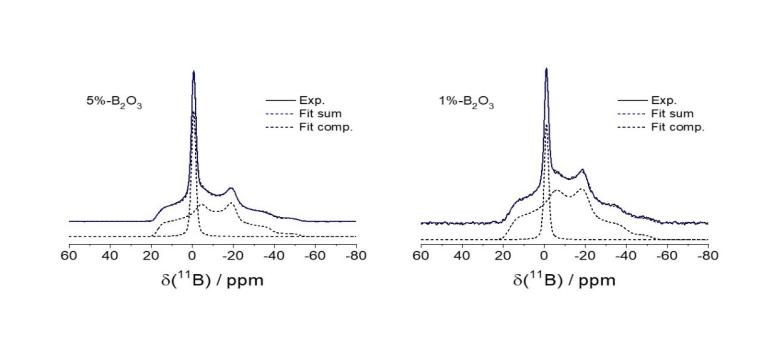Composition - Structure – Property Correlations in Boron-Containing Bioglasses Studied by Solid State NMR.
FAPESP 2013-07793-6 and CNPq
The development of new bioglass formulations for bone and tissue repair is an important area in applied glass science and technology. The incorporation of boron into bioglasses has recently attracted interest owing to increased bioactivity, improved biocompatibility and antibacterial function, combined with enhanced mechanical stability. Despite this considerable interest, to the present date no information is available regarding the chemical nature of the borate species and its structural integration in the bioglass network. We address this issue using advanced solid state nuclear magnetic resonance (NMR) techniques. Bioglass formulations include both the 45S5 and the biosilicate (Na2O-CaO-SiO2-P2O5) systems prepared by the melt-cooling method as well as mesoporous systems prepared by templated synthesis The results provide a structural rationale for the influence of borate on the bioactivity of these glasses.

Solid state 11B NMR spectrum of a sodium calcium metasilicate bioglass containing small amounts of borate species. The sharp signal is attributable to four-coordinated boron species while the broader lineshape signifies a three-coordinated metaborate-type species.
Publications
Synthesis of Non-siliceous Glasses and Their Structural Characterization by Solid-State NMR, H. Eckert, in: Klein L., Aparicio M., Jitianu A. (eds) Handbook of Sol-Gel Science and Technology. Springer, Cham, 2018, 1-52.
Spying with Spins on Messy Materials – 60 years of solid state NMR structural analysis of glasses, H. Eckert, Int. J. Appl. Glass Sci, 9, 167-187 (2018).
Effect of aluminium ion incorporation on the bioactivity and structure in mesoporous bioactive glasses, S. Melchers, T. Uesbeck, O. Winter, H. Eckert, D. Eder, Chem. Mater. 28, 3254–3264 (2016).
